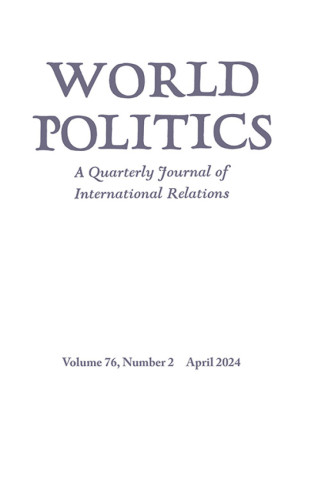宗教结构、民族结构与叛乱动员
IF 2.5
1区 社会学
Q1 INTERNATIONAL RELATIONS
引用次数: 5
摘要
摘要本文对少数民族的社会结构提出了问题,以解释少数民族内部和不同民族之间叛乱动员的变化。基于基于网络的社会结构方法,它认为反叛分子的动员受到族群结构连接的限制,这是衡量亚民族社区——社区、村庄、氏族和部落——内部和彼此之间社会连接程度的指标。在农业社会中,结构上的联系可以追溯到宗教。根据印度米佐叛乱招募反叛分子的独特数据,以及与基督教在米佐人中传播相关的微观变化,作者证明,威尔士长老会使命下高度集中的教会和机构网络增强了结构连接,大大促进了反叛分子的招募。对Mizo叛乱分子的半结构化采访以及来自邻近Meitei和Naga民族叛乱的人种学证据进一步支持了这一论点和偶然机制。本文章由计算机程序翻译,如有差异,请以英文原文为准。
The Structure of Religion, Ethnicity, and Insurgent Mobilization
ABSTRACT This article problematizes the social structure of ethnic groups to account for variation in insurgent mobilization within and across ethnic groups. Relying on network-based approaches to social structure, it argues that insurgent mobilization is constrained by the structural connectivity of the ethnic group, a measure of the extent to which subethnic communities—neighborhoods, villages, clans, and tribes—are socially connected internally and with each other. In agrarian societies, structural connectivity is traced to religion. On the basis of unique data on rebel recruitment from the Mizo insurgency in India and microlevel variations in changes associated with the spread of Christianity among Mizos, the author demonstrates that enhanced structural connectivity resulting from a network of highly centralized churches and institutions under the Welsh Presbyterian Mission significantly bolstered insurgent recruitment. Semistructured interviews of Mizo insurgents and ethnographic evidence from the neighboring Meitei and Naga ethnic insurgencies further support the argument and the casual mechanism.
求助全文
通过发布文献求助,成功后即可免费获取论文全文。
去求助
来源期刊

World Politics
Multiple-
CiteScore
8.40
自引率
0.00%
发文量
24
期刊介绍:
World Politics, founded in 1948, is an internationally renowned quarterly journal of political science published in both print and online versions. Open to contributions by scholars, World Politics invites submission of research articles that make theoretical and empirical contributions to the literature, review articles, and research notes bearing on problems in international relations and comparative politics. The journal does not publish articles on current affairs, policy pieces, or narratives of a journalistic nature. Articles submitted for consideration are unsolicited, except for review articles, which are usually commissioned. Published for the Princeton Institute for International and Regional Affairs
 求助内容:
求助内容: 应助结果提醒方式:
应助结果提醒方式:


